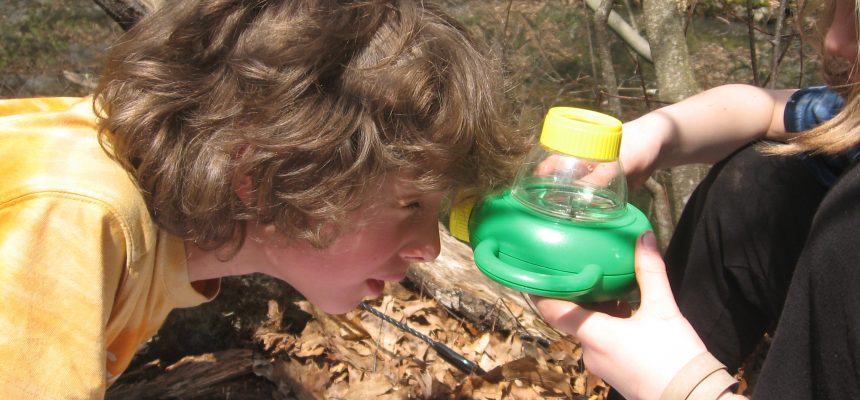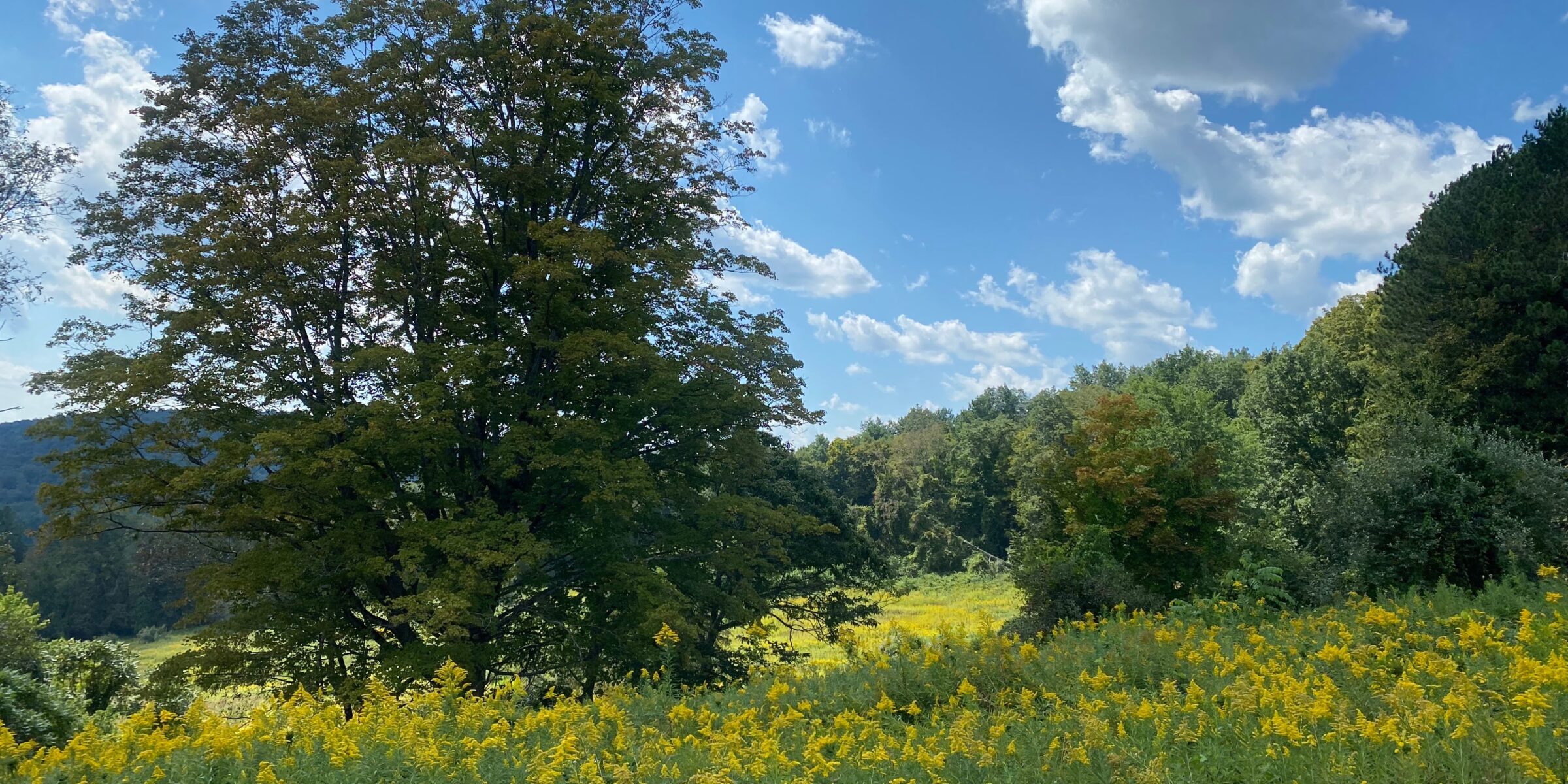
Surviving in an Ecosystem
An abundance of aquatic environments in our region provide a hands-on opportunity for students to learn about how the adaptations of a particular organism make it well-suited to a unique environment. Choose between a Vernal Pool Study, or a Stream Study, or combine them for a more comprehensive understanding as students compare and contrast the habitats and their inhabitants.
NGSS: Environmental Impacts on Organisms & Life Cycles and Traits: LS2.C, LS2.D, LS4.C, LS4.D, LS1.B
EL: Adaptations and the Wide World of Frogs
- Frog-tastic Adaptations
You may have read about rainforest or desert frogs and their flashy features. But did you know we have a variety of fantastic frogs in our own backyard? Learn about the complex life cycle of the bullfrog, and meet a variety of other local species and their unique adaptations.
Any time of year – In classroom, Length: 1 hour - Intro to Aquatic Habitats & Organisms
Students are introduced to aquatic environments and the organisms that live there through an interactive slideshow where students collect data in preparation for their field research. Focusing on local amphibians and macroinvertebrates, students learn about their unique life cycles and adaptations that help them survive in their habitats.
Spring – In classroom, Length: 1 hour - Vernal Pool Field Research
There is no better place than a vernal pool to witness the dynamic nature and resilient inhabitants of an ecosystem. As the physical characteristics of this habitat change with each season, so does the availability of resources. Only a select group of specially-adapted organisms can survive and reproduce here. Students venture into the woods, and roll up their sleeves as they use nets, magnifiers, and field guides to collect a variety of organisms for observation and for identification.
Spring – Outdoors at a vernal pool, Length: 2 hours - Stream Field Research
Streams crisscross through a variety of habitats; some roaring through, while others meander. It takes a unique set of skills and adaptations to survive in a lotic environment. Students don their wellies and explore the scores of macroinvertebrates and other organisms that inhabit our cool running streams.
Spring – Outdoors at a stream, Length: 2 hours
Adaptations and Habitats
Choose from an array of lessons to help your students understand adaptations and natural selection. Combine in-class and outdoor programs that teach observation skills and build connections between physical characteristics and habitats.
NGSS: Environmental Impacts on Organisms LS2.C, LS2.D, LS4.C, LS4.D
- Introduction to Birds
Students are introduced to bird features and behaviors as they begin recording observations of birds in motion in their Bird Journals.
Any time of year – In classroom, Length: 1 hour - Comparing Birds & Habitats
In guided small group activities students identify key features of the main habitat types found in Vermont. Then by examining the physical characteristics of a variety of local birds, students make informed claims about which Vermont habitats the birds might live in.
Any time of year – In classroom, Length: 1.5 hours - Bird Adaptations
Through a slideshow, students make observations of physical characteristics of birds in specific habitats in order to make and support claims as to whether a species migrates or stays active in Vermont through the winter.
Any time of year – In classroom, Length: 1 hour
- Habitat Hike
To bring the above bird adaptions and habitats scenarios to life, students work in small groups collecting evidence of the habitat needs of one of our local forest or meadow birds.
Any time of year – Outdoors, Length: 1.5 hours
- Bird Hike
Students visit different habitats and draw on their observation skills and understanding of habitat features to model bird behaviors through games and activities. In the winter, there is a focus on survival strategies. In the spring, there is a focus on migration and bird song.
Any time of year – Outdoors, Length: 2 hours
